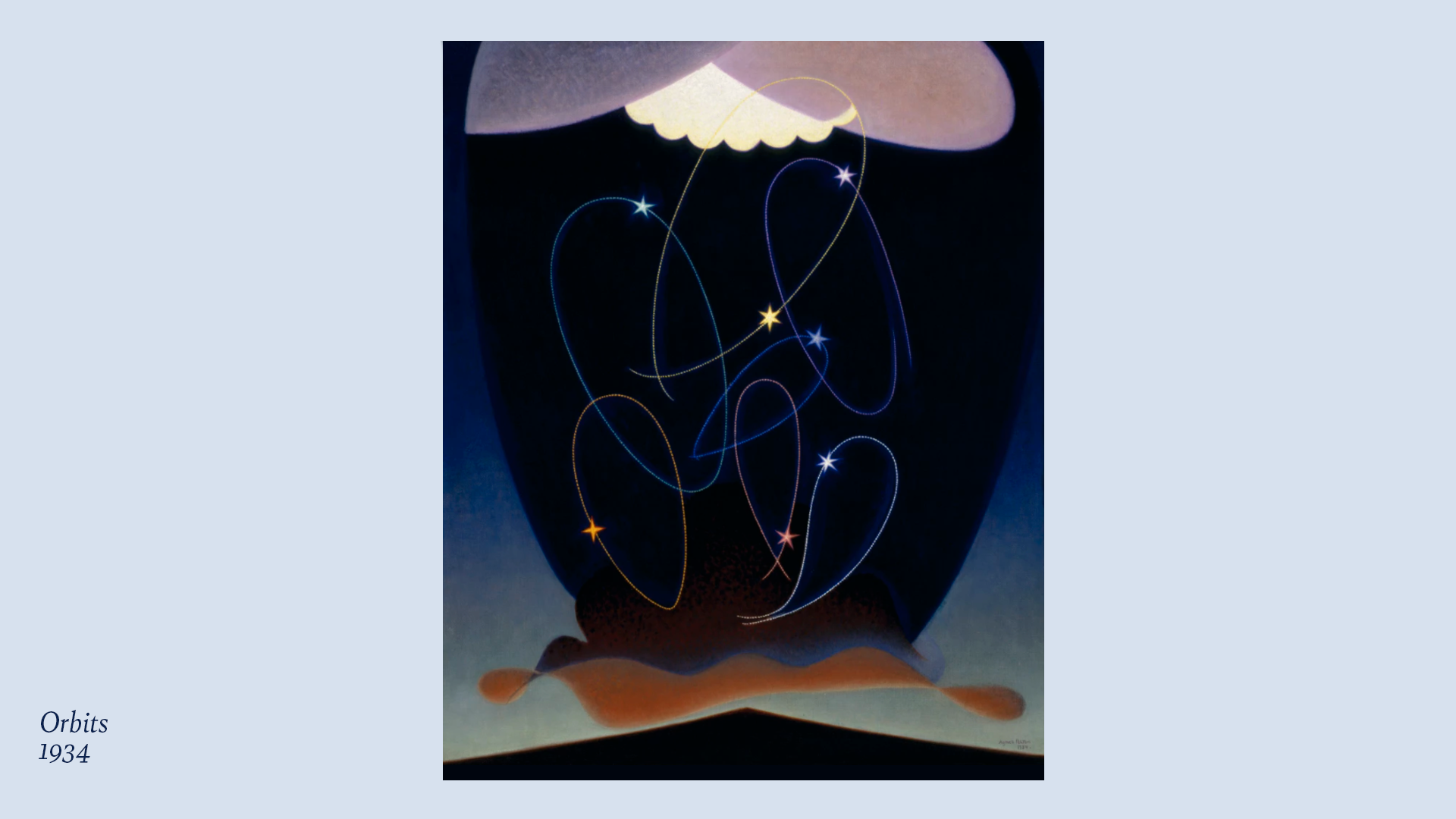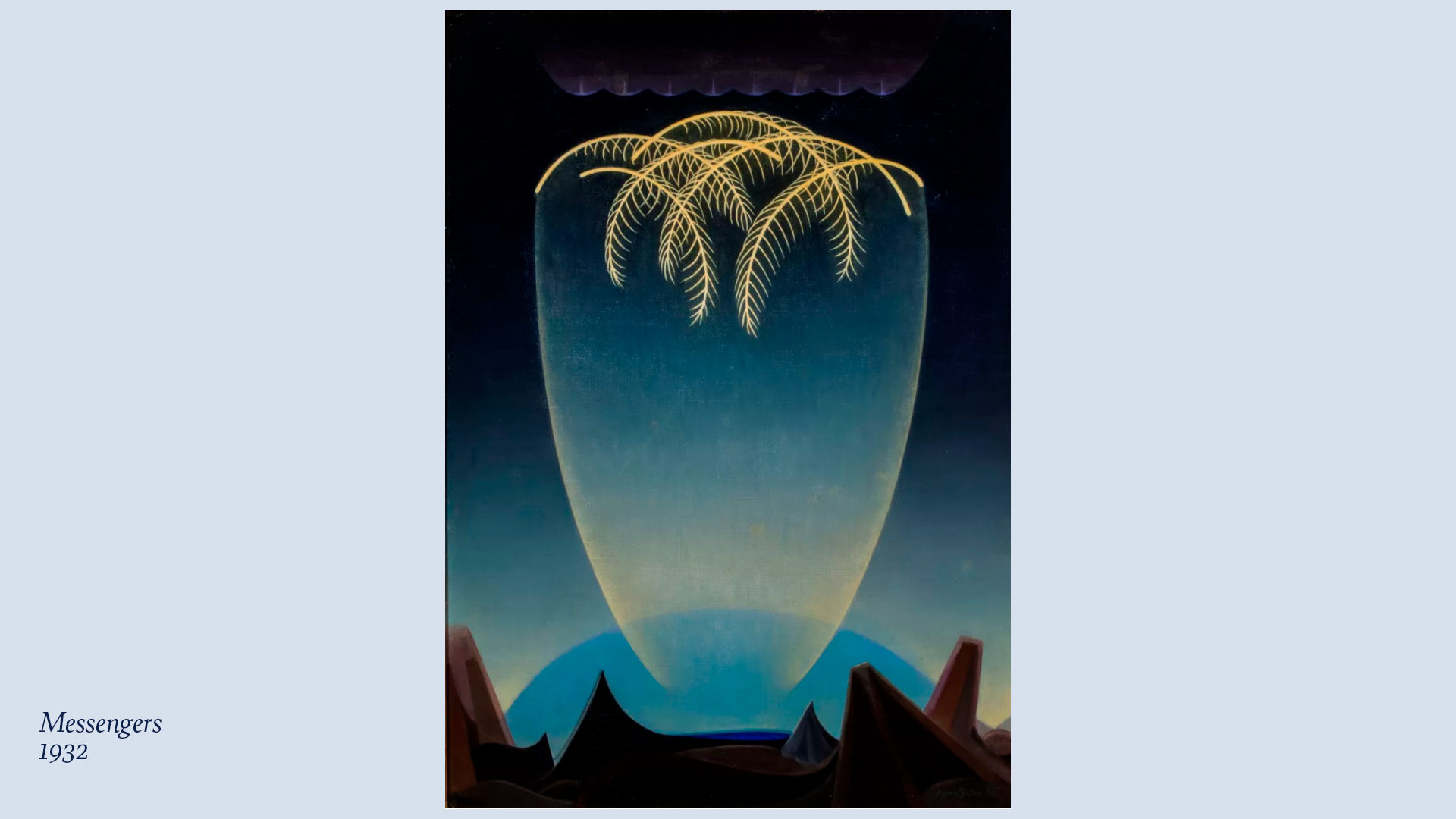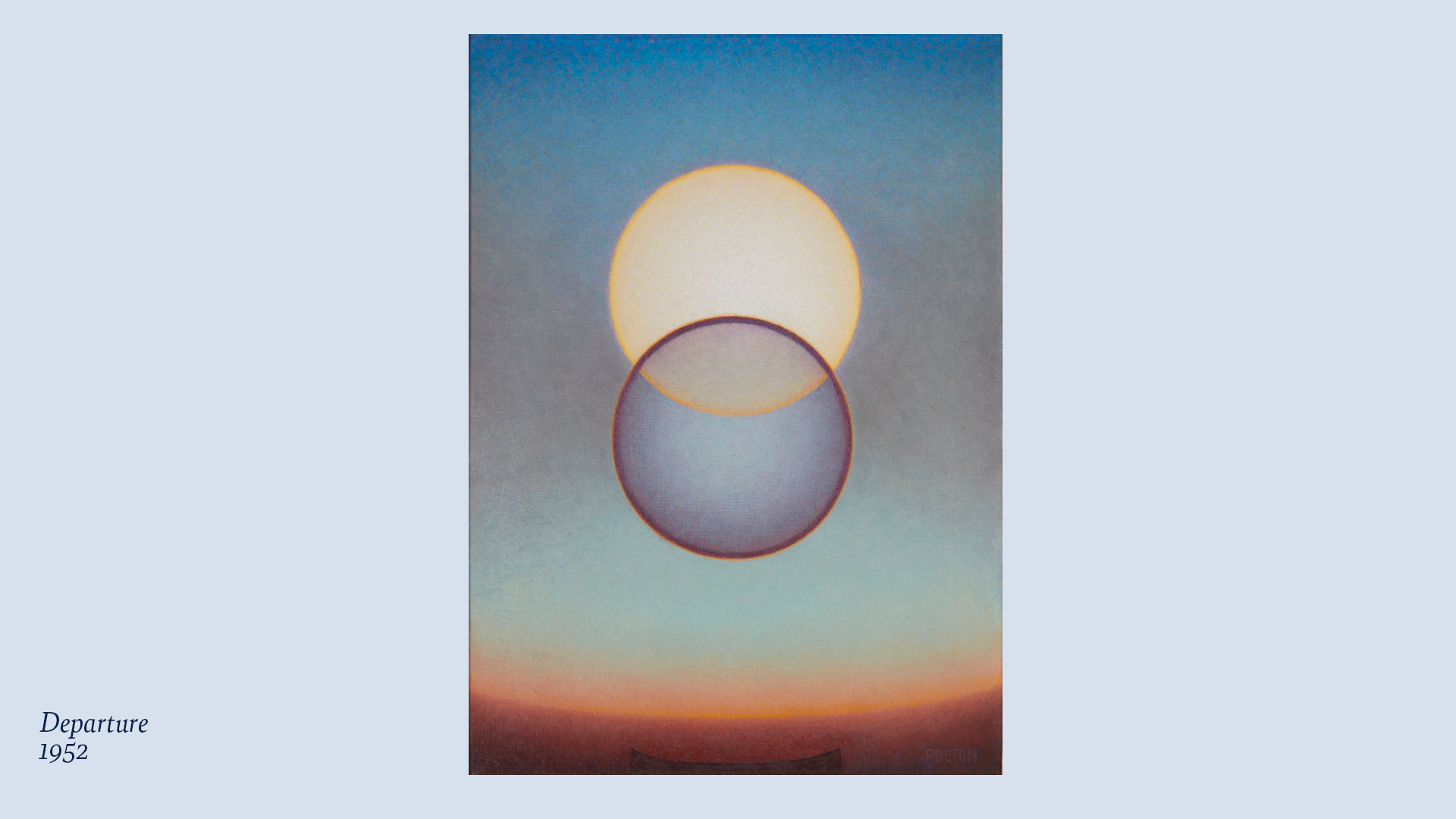Agnes Pelton: Desert Mystic
“What must be painted is not the visible, but that which was regarded as invisible, namely what the clairvoyant painter sees”
- Umberto Boccioni, Italy, 1882-1916, Futurist
In a dim world before it’s day
Above the silent waters
Self propelling, radiating
Behold the swift wing
Of Life awakening
As the first blunt mountains rise
This poem was written by artist Agnes Pelton as a means to help viewers access the metaphysical purpose of her painting “The Primal Wing”. Much like artists such as Hilma af Klint and Ithell Colquhoun, Agnes Pelton was part of a subset of the modernist art movement exploring the spiritual and the occult..
Born 1881 in Germany she moved to New York as a child, where she later studied art. A contemporary of Georgia O’Keefe – Pelton was interested in the spiritual and imaginative aspects of painting early in her career, but her work didn’t take on an abstract esoteric flavour until she moved to the American west and was introduced to Theosophy in 1930.
I won’t go into much detail on the teachings of the Theosophical Society but suffice to say it was – and still is – a society interested in spiritual development and the universal truths they felt lay at the heart of religion. The word theosophy is derived from the Greek word ‘theosophia’ which roughly amalgamates to be something along the lines of ‘divine wisdom’, so it’s members looked past the outward differences between disparate beliefs to find the core of the wisdom within. Of particular interest were the works of Neo-Platonic philosophers, Sufism, Qabbalah, Vedanta, Zoroastrianism and Mahayana Buddhism: the usual mix of eastern and western traditions found in late 19th, early 20th century occultism. Of course despite many intelligent and passionate members with high ideals there were plenty of squabbles with egos getting bent out of shape, meaning that by the time incredibly influential leader Helena Blavatsky had passed the organisation had schismed with rival branches around Europe, India and of course in the US where Pelton was based.
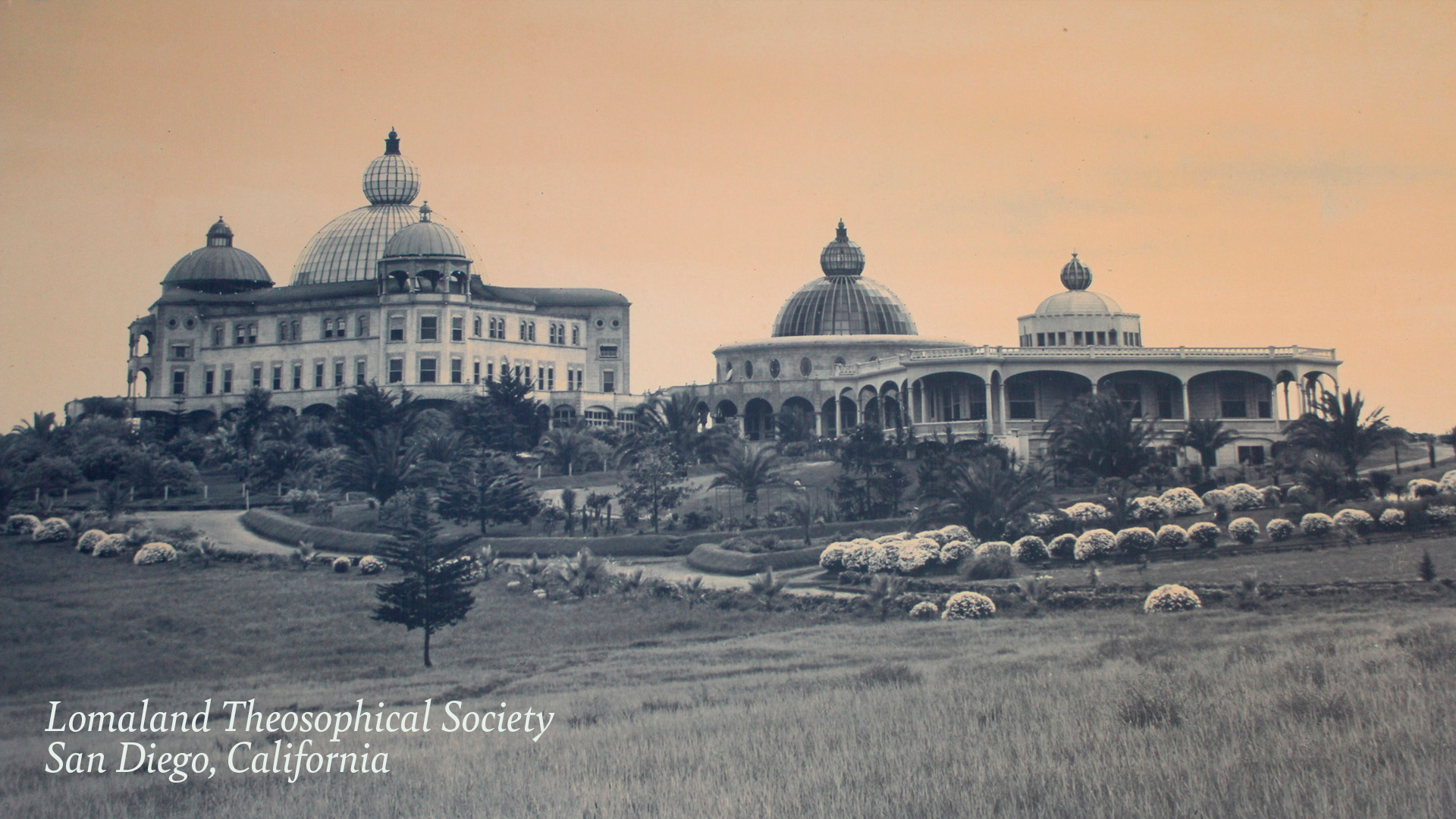
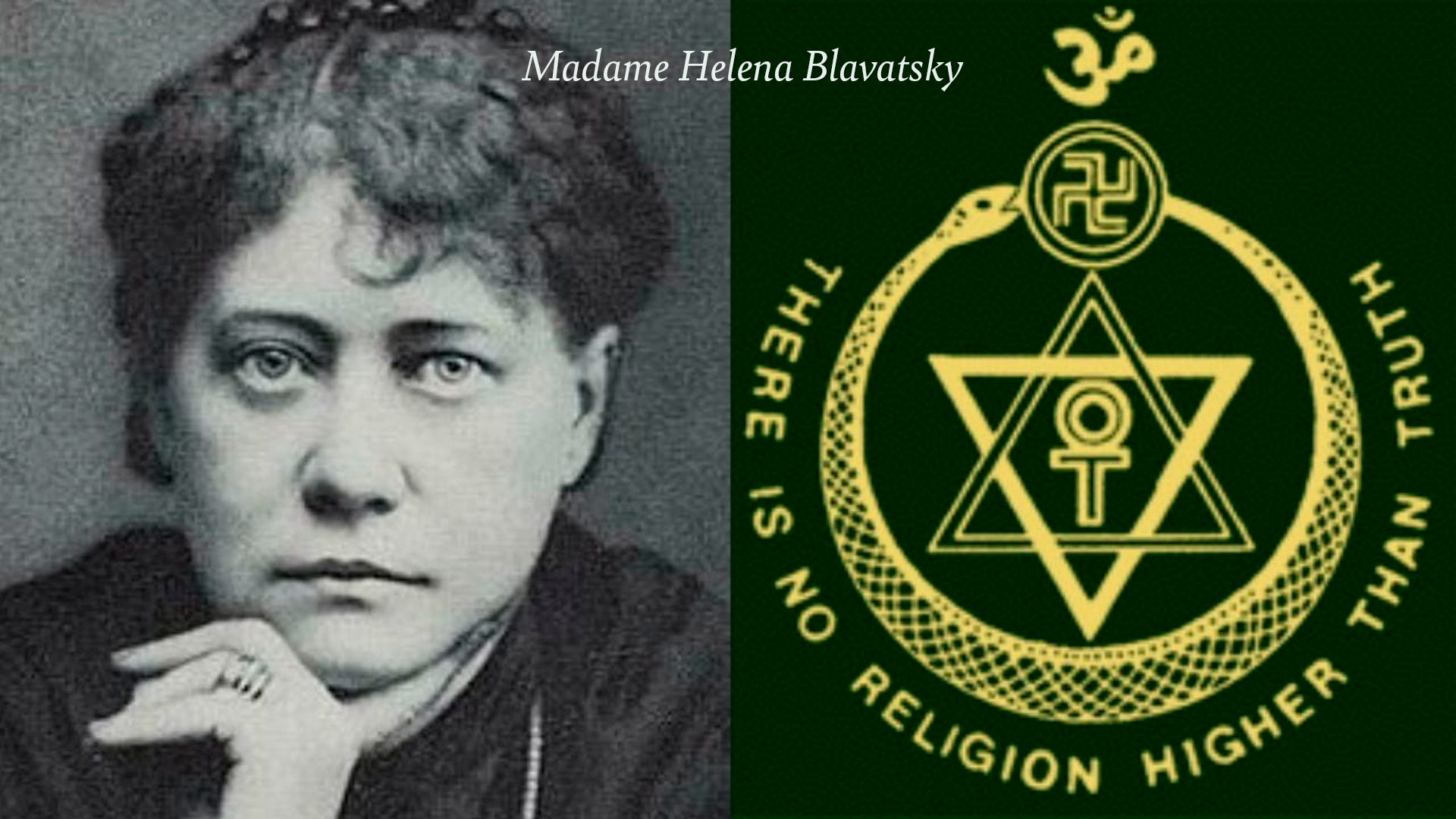
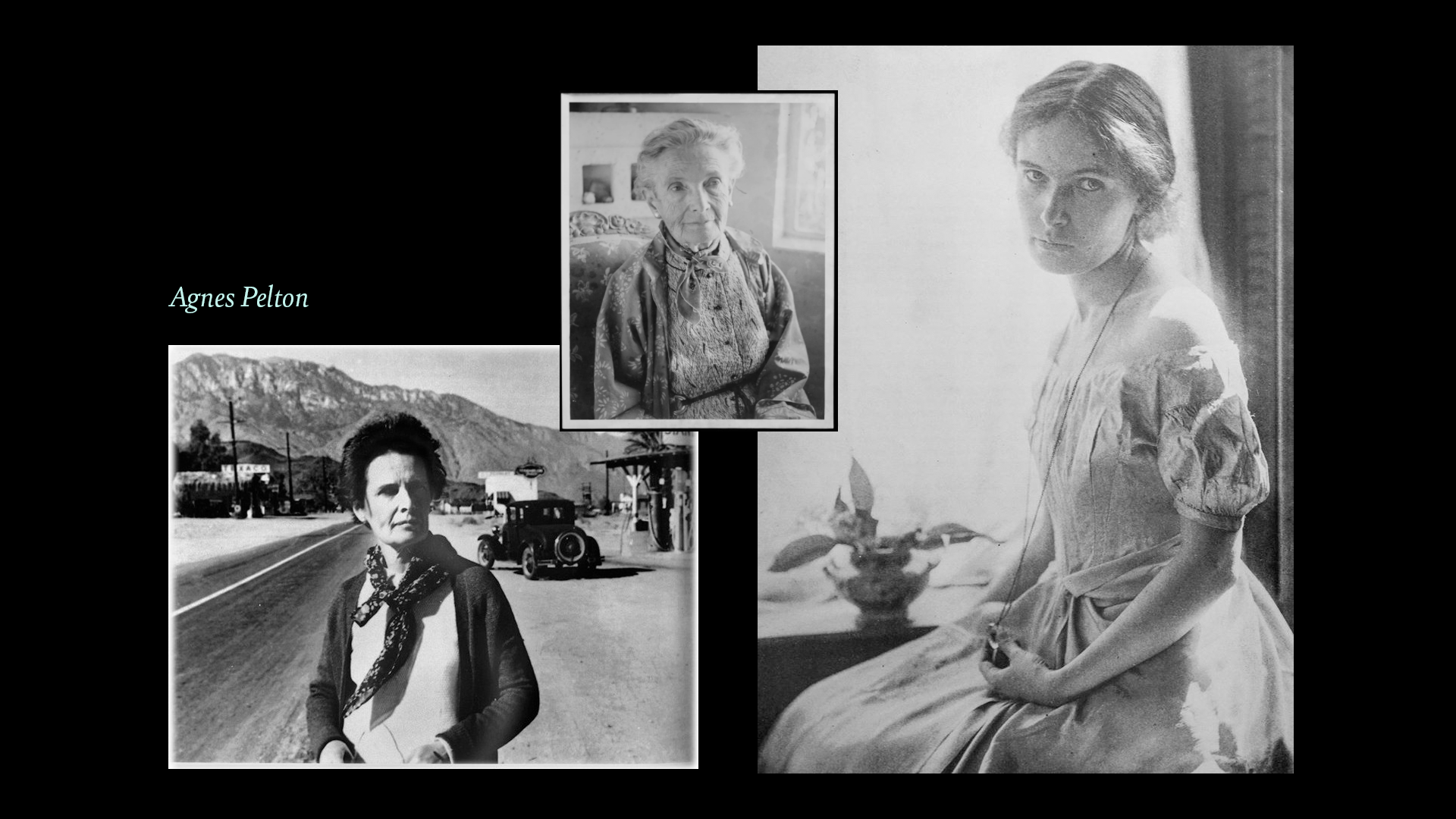

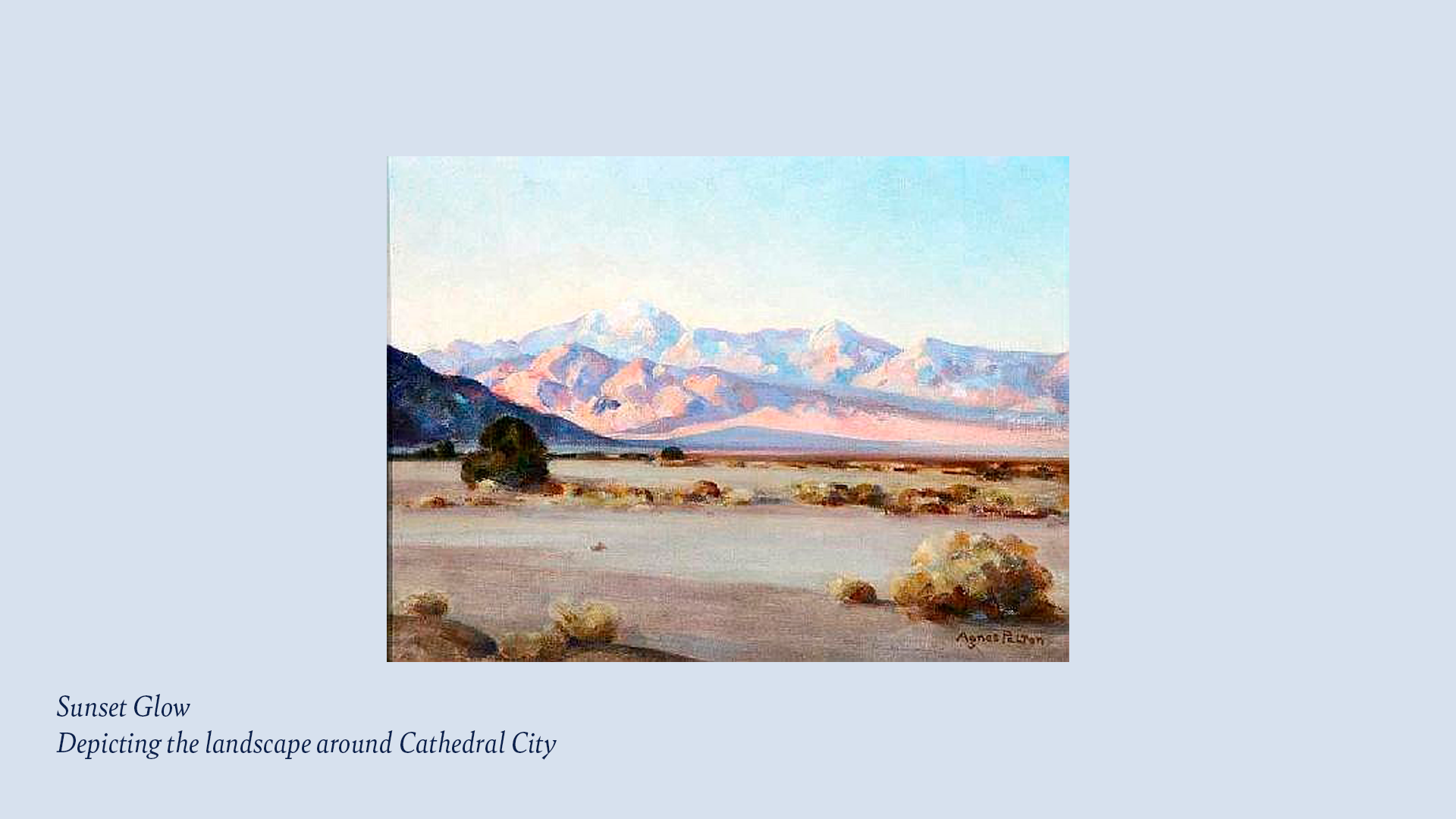
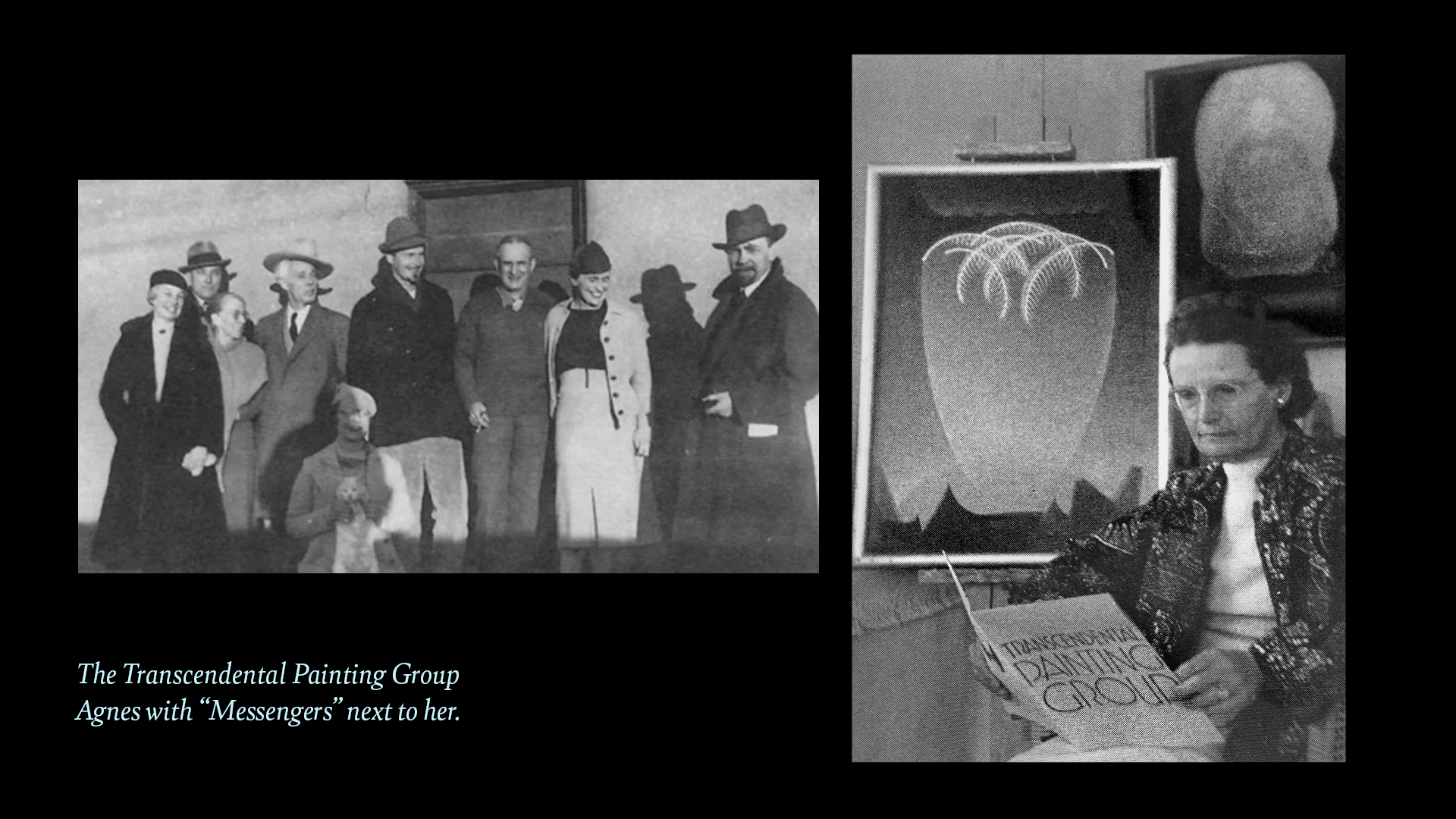
As well as the burgeonging occult revival Wassily Kandinsky’s treatise ‘Concerning the Spiritual in Art’ published in 1912 had a considerable effect on modernist artists who came after, including those like Pelton who found themselves transfixed by the surroundings of the American West
Agnes Pelton had travelled quite extensively by the time she came to settle under the wide desert skies in Cathedral City, California. It suited her need for moments of meditative stillness allowing her to give form to her vision of the consciousness of the universe. She wasn’t the only artist drawn to the American West - many modernist artists travelled to California, Arizona, Nevada and New Mexico in search of the spiritual and often under the influence of the Theosophical society which had a substantial membership in California. In the book that accompanied the exhibition ‘Enchanted Modernities; Theosophy, the Arts and the American West’ the authors examine the role that both theosophy and geography had on this group of modernist artist and creators, including The Transcendental Painting Group, to which Agnes Martin belonged. Consisting of 11 members the group worked feverishly between 1938 and 1942. Their manifesto was to ‘carry painting beyond the appearance of the physical world, through new concepts of space, colour, light and design, to imaginative realms that are idealistic and spiritual. The work of the group does not concern itself with political, economic or other materialistic problems.’ Perhaps this might seem quite high-minded when political, economic or other materialistic problems might not be so easily forgotten by many. But those concerns can swamp not just artists but everyone after a while and it can be refreshing to put them aside and explore your art practice through a different lens. I know this is the case for me and for my practice which also steers clear of the socio-political for my own sanity as much as anything! And there are plenty of other artists working in those areas.
Of her painting Pelton said:
“My abstract pictures are just as real to me as nature, they are not material, but mental images. They are a culmination of impressions which come to me at a quiet time just exactly as a line of verse comes to a poets mind; the only difference being that I see it in form and colour, and the poet sees it in sound and words.”
Much like contemporaries Ithell Colquhoun and Hilma af Klint, Pelton valued the mystical and symbolic language of colour which she carefully used to enhance the meaning in her works; for example blue represents high spirituality, devotion to a noble ideal, as well as to the wide skies of her home and of the expanse of the universe beyond our world
Pelton was influenced by the theosophical concept of ‘thought forms’ expounded in Annie Besant and CW Leadbetters 1905 book of the same name. Her challenge was to represent a reality that in the words of theosophical thought ‘transcend all It’s expressions’ – not a small task! Using an abstract vocabulary of curving forms and delicate, shimmering veils of light, she portrayed her awareness of a world that lay behind physical appearances, where her floating thought forms hang above the rolling landscape as if being presented on a kind of natural stage.

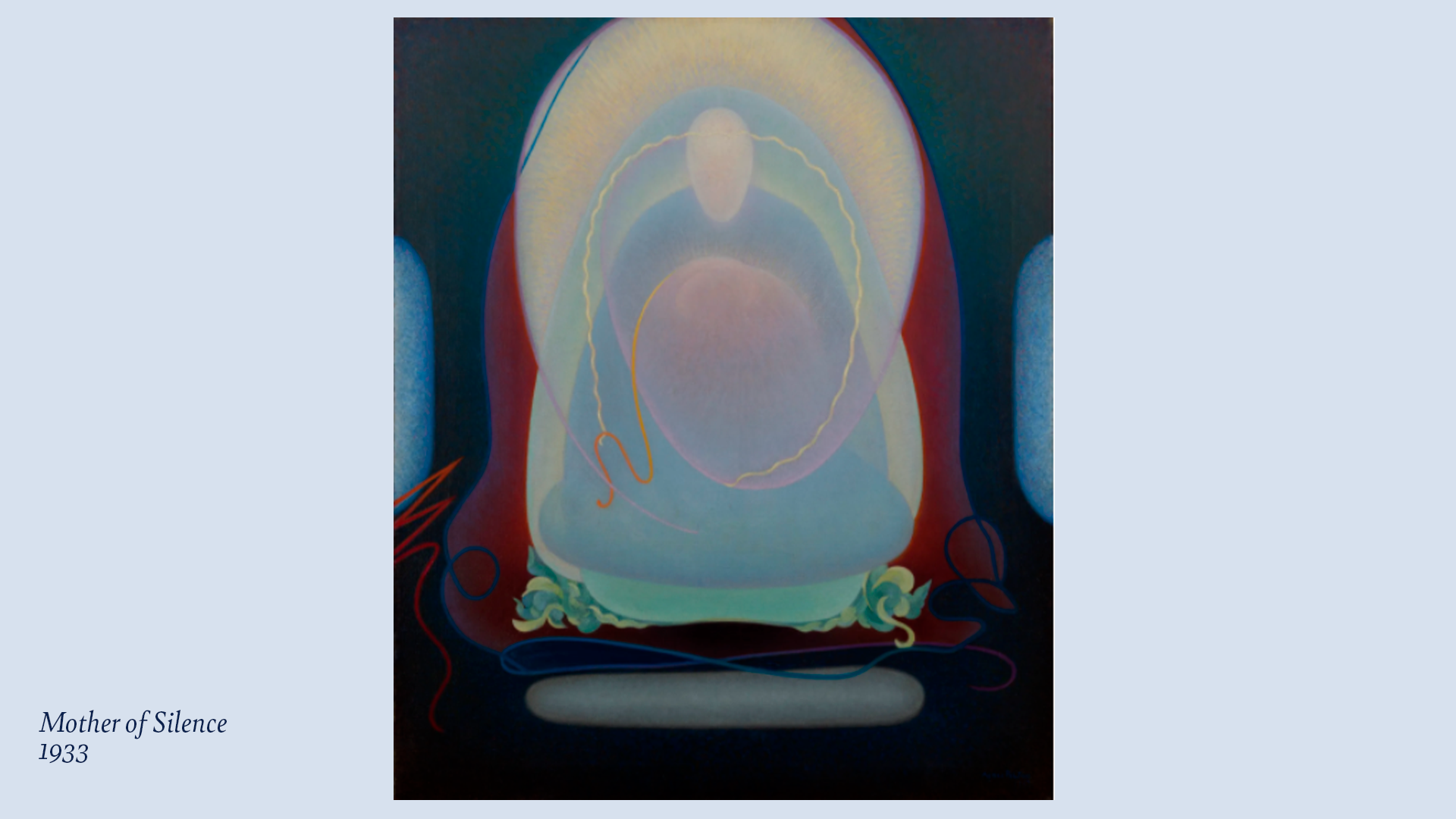
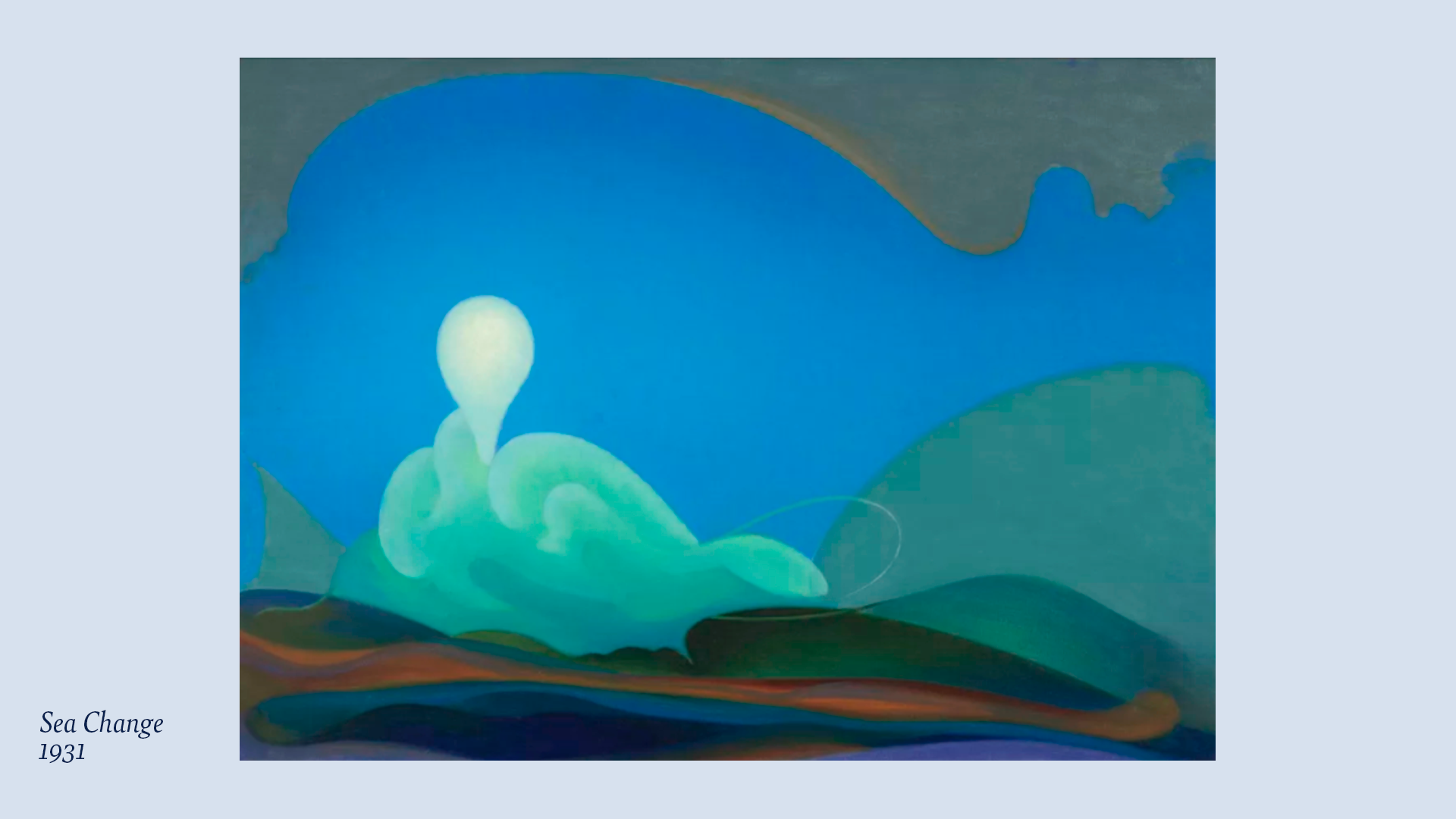
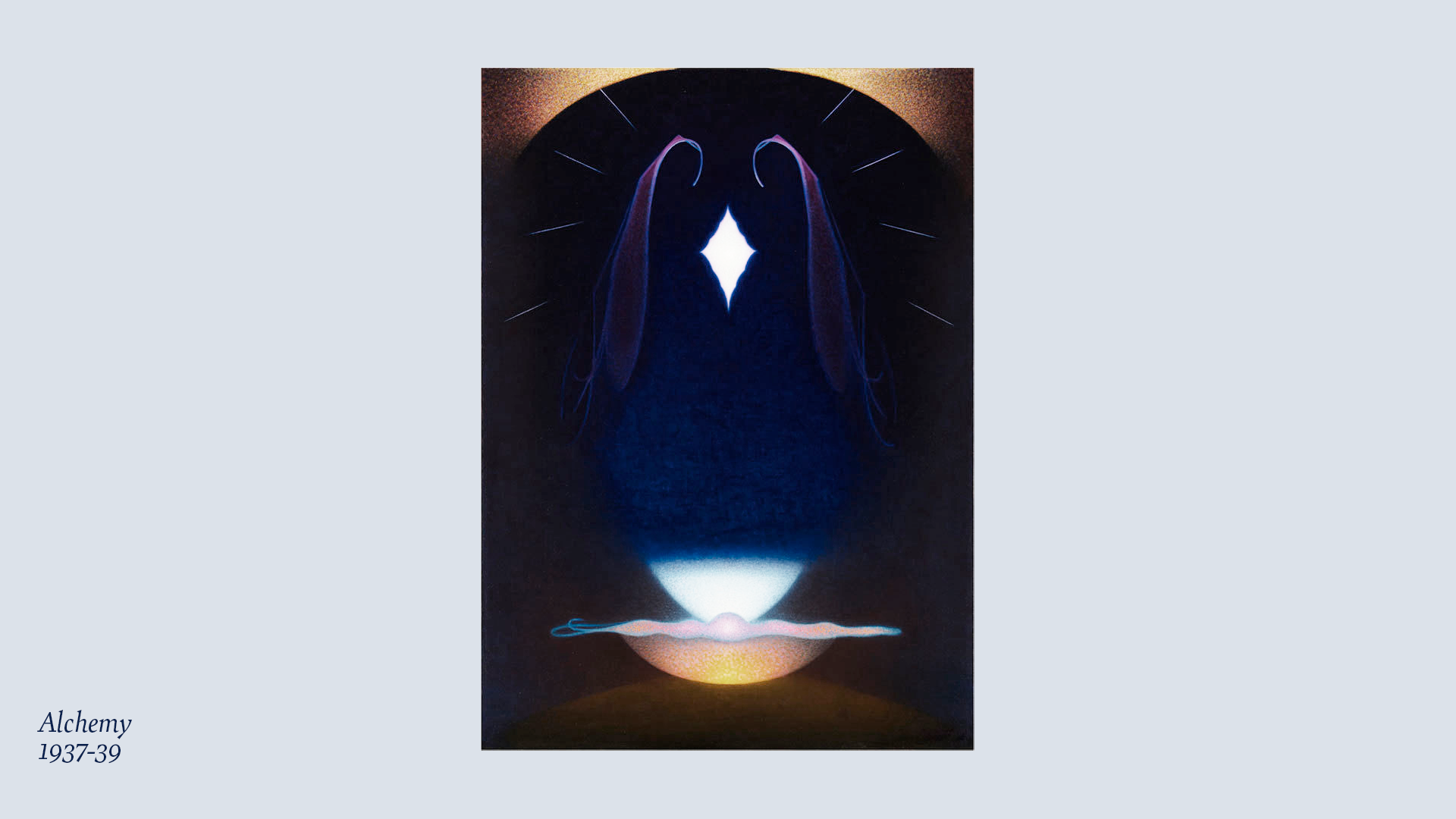
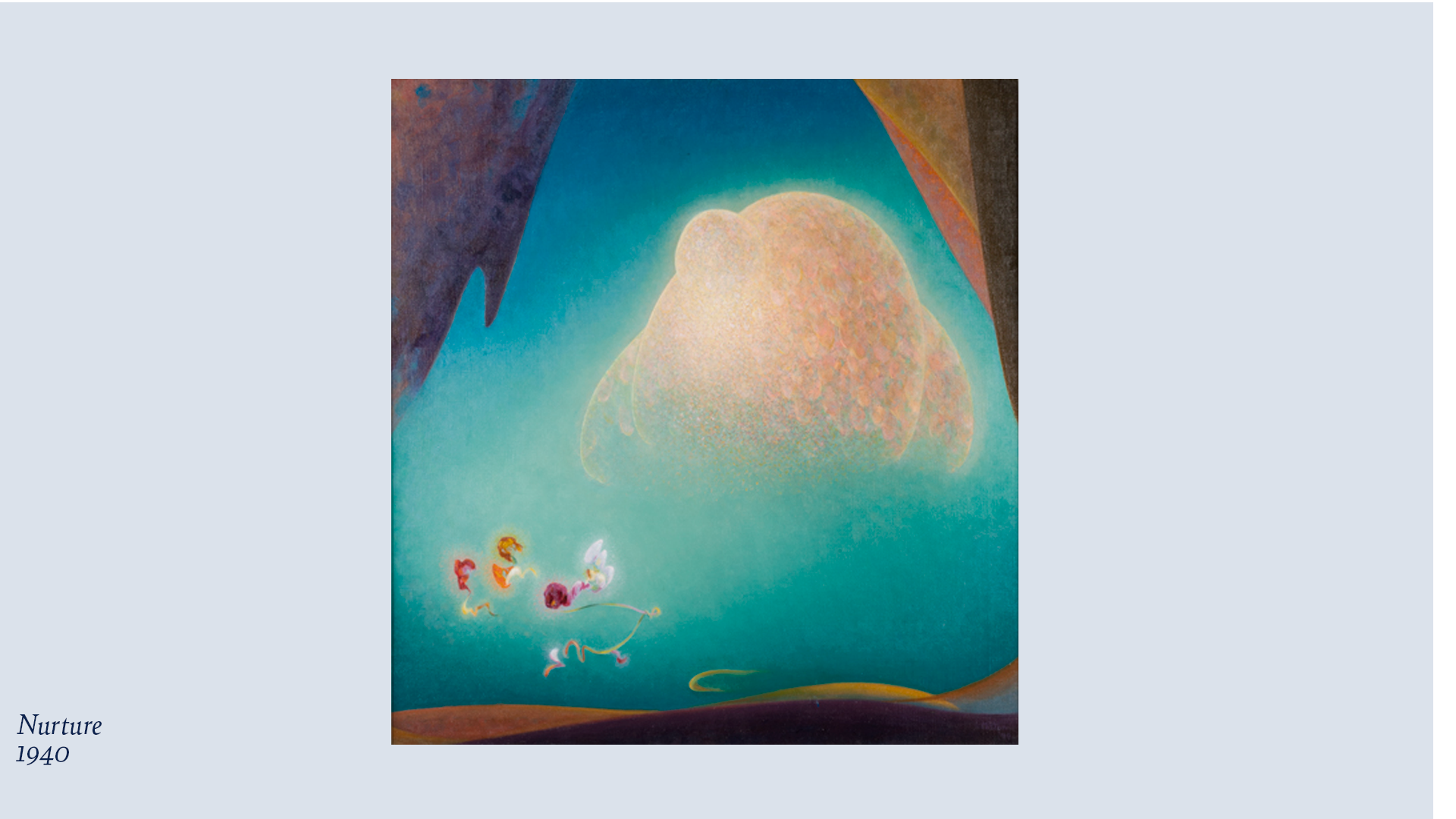

Something about this consistent presentation of ideas really appeals to me. I enjoy the way the idea or thought-form is given centre stage as a meditative focus but framed by landscape and vast sky. The rocky peaks are always heavy at the base tethering these non-corporeal elements to the natural world, specifically to the mountains of Peltons home. The thought forms are usually vast in size compared to the rolling peaks which emphasizes the way they inhabit the greater universe not just our material plain.
Her 1934 painting Orbits is one of my favourites. Here a dark void opens in the evening sky above a pointed mountain peak like curtains pulled aside to show the looping dance of coloured stars. A sunset-lit cloud or veil floats below the void and a radiant lotus-like flower form opens above it. It makes me think of the veil of the world being pulled aside so that we can observe the workings of the universe, dancing happily through chaotic paths.
1932’s messengers is the painting that makes me think most of her American West surroundings – I think it’s way the floating thought form in this work resembles palm fronds, although it could also be feathers. She had a remarkable ability to portray the radiance of light. The dark to light tones of blue and pale yellow are very peaceful and juxtapose beautifully with the jagged spikes of the mountain tops.
In the last decade of her life she painted ‘Departure’ one of her most sparse, peaceful and profound images. This reminds me of some of my favourite Hilma af Klint works, the last 3 in the series ‘The Dove’ - except where af Klint created firm solid circles of colour, Peltons translucent spheres melt into each other and into the soft sky. Gone are the mountainous forms of previous paintings, to be replaced by a vast curving desert and the hazy glow of a setting sun.
